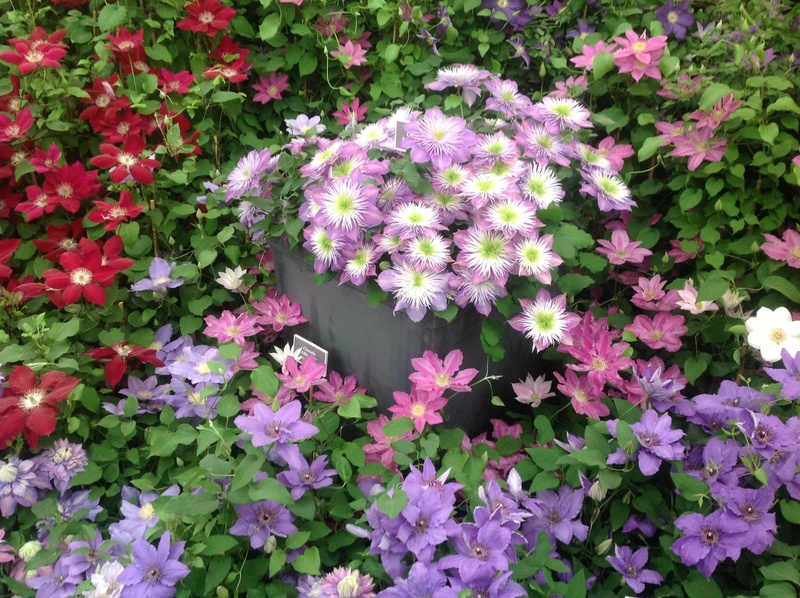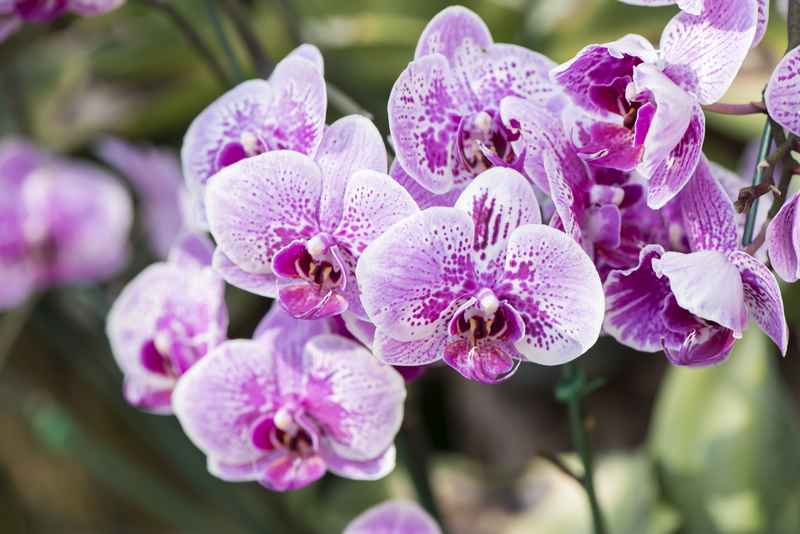Steps to Successfully Nurture a Herb Garden at Home
Posted on 23/06/2025
Steps to Successfully Nurture a Herb Garden at Home
Are you dreaming of adding fresh flavors to your meals with homegrown herbs? Starting a herb garden at home is a rewarding and cost-effective way to embrace healthier, tastier cooking. Whether you have a spacious backyard or a sunny windowsill, growing herbs can be surprisingly easy and enjoyable. In this comprehensive guide, we'll walk you through proven steps to successfully nurture a herb garden at home, so you can harvest aromatic, pesticide-free greens right from your doorstep.

Why Start a Herb Garden at Home?
Before we delve into the tried-and-true steps of home herb gardening, let's cover the major benefits you stand to gain:
- Healthier Meals: Fresh herbs add nutrients and flavor, helping reduce salt and fat in recipes.
- Year-Round Harvesting: Many herbs can be grown indoors, allowing for year-round use.
- Cost Savings: Homegrown herbs are more affordable than store-bought bunches.
- Sustainability: Growing your own herbs reduces your carbon footprint and reliance on packaging.
- Therapeutic Activity: Tending a herb garden is soothing and improves overall well-being.
1. Choose the Right Location for Your Herb Garden
The success of nurturing a herb garden at home starts with location. The perfect spot ensures strong, fragrant, and productive plants. Consider these crucial elements when selecting where to grow your herbs:
- Sunlight: Most herbs thrive with at least 6 hours of direct sunlight daily. Observe your space to find the sunniest windowsill, balcony, or patio area.
- Protection: Choose a location protected from strong winds or temperature extremes, especially if growing outdoors.
- Convenience: Place your herb garden somewhere easy to access from your kitchen. This encourages regular use and care.
*Tip: North-facing windows get less light and may not be ideal for sun-loving herbs.
2. Select the Best Herbs for Home Gardening
Not all herbs are equally suited for growing at home, so starting with the right varieties is vital. Decide whether you want to plant seeds or buy young plants (also called seedlings) for quicker results. Here's a list of easy and prolific herbs, especially for beginners:
- Basil: Loves warmth and sunlight; perfect for summer.
- Chives: Hardy, perennial, and great for indoor pots.
- Mint: Vigorous grower, but best kept in its own pot to prevent spreading.
- Parsley: Grows well both indoors and outdoors.
- Oregano: Thrives in pots or gardens; sun-loving.
- Rosemary: Needs good drainage and lots of sun.
- Cilantro: Fast-growing, ideal for regular harvesting.
- Thyme: Easy, drought-tolerant, and fragrant.
Advanced options for the ambitious: Sage, dill, lavender, and lemongrass can be added as your skills improve.
3. Choose the Right Containers and Soil
Selecting proper containers and potting soil is fundamental for successfully nurturing a herb garden at home.
- Pots: Ensure each pot has drainage holes. Clay pots are breathable and prevent overwatering, while plastic containers retain moisture longer.
- Soil: Use high-quality, lightweight potting mix, preferably organic. Avoid garden soil, as it compacts and may carry pests and diseases.
- Herb Placement: Plant vigorous growers (like mint) in separate pots. You can group herbs with similar water and light needs in one container.
*Pro tip: Consider raised beds for outdoor herb gardens to improve drainage and accessibility.
4. Master the Art of Planting and Sowing
Successfully establishing your home herb garden depends on proper planting or sowing. Follow these steps for thriving plants:
- Starting from Seed: Sow seeds on the surface of moist potting mix. Lightly cover most seeds, but check packet instructions--some (like basil) need light to germinate.
- Transplanting Seedlings: Dig a hole big enough for the root ball, gently place the seedling in, and backfill with soil. Press lightly and water in.
- Spacing: Don't overcrowd. Herbs need airflow to prevent disease--check recommended spacing for each variety.
Labels make life easier! Mark each pot to identify your herbs as they grow.
5. Watering Wisely: The Key to Herb Garden Nurturing
Water is essential for herb health, but overwatering is one of the most common mistakes in home herb gardening. Here's how to get it right:
- Check Soil Moisture: Stick a finger into the soil up to your first knuckle. If it feels dry, it's time to water.
- Consistency: Most herbs prefer soil that's consistently moist but not soggy. Water thoroughly but allow soil to dry slightly between waterings.
- Early Morning or Late afternoon: Water when the sun is gentle to minimize evaporation and plant stress.
- Drainage: Ensure no water accumulates at the base of pots; root rot is the enemy of happy herbs.
*Special Note: Mediterranean herbs, like rosemary and thyme, tolerate drought better than basil or parsley.
6. Feed Your Herbs: Fertilizing for Optimal Growth
While most herbs don't require heavy feeding, giving them gentle nutrition makes them more robust and flavorsome.
- Organic Fertilizers: Use liquid seaweed, compost tea, or diluted fish emulsion every 4-6 weeks.
- Compost: Mixing a small amount of well-rotted compost into the planting soil enriches nutrients and supports beneficial microbes.
- Don't Overfeed: Too much fertilizer causes lush, less-flavorful leaves. Herbs thrive with moderate feeding.
Healthy soil grows healthy herbs. Prioritize organic matter for long-term success!
7. Pruning and Harvesting for Fuller Plants
Savvy gardeners know that regular pruning and harvesting is crucial for nurturing bushy, productive herbs. Here's how to do it right:
- Pinch, Don't Pluck: Use clean scissors or pinch off stems just above a set of leaves to encourage new growth. Never remove more than one-third of the plant at a time.
- Flower Buds: Remove them as soon as they appear (except for herbs like chives or cilantro, whose flowers are edible) to keep herbs focused on leaf production.
- Timing: Harvest in the morning when essential oils are at their highest for maximum flavor.
Regular harvesting is the secret to lush, long-lasting herbs that keep producing throughout the season.
8. Monitor for Pests and Diseases
While most herbs are naturally resistant to pests, vigilance is key. Protect your home herb garden by inspecting regularly and acting promptly:
- Look Under Leaves: Aphids and spider mites often hide there. Remove with a gentle spray or wipe.
- Nip Problems Early: Catching an issue early means you can remove damaged leaves or apply natural remedies.
- Choose Natural Solutions: Neem oil, insecticidal soap, and garlic sprays are safe for edible plants.
- Good Airflow: Keep plants spaced and trimmed to reduce fungal diseases.
A thriving herb garden at home is healthy, vibrant, and pest-free with early intervention and organic care.
9. Adjust Care as the Seasons Change
One of the key steps to nurturing a successful home herb garden is adapting your approach with the weather and seasons:
- Winter: Move potted herbs indoors or to sheltered spots. Reduce watering and feeding.
- Spring/Summer: Increase watering, prune regularly, and watch for rapid growth.
- Hotter Climates: Provide midday shade for sensitive herbs like cilantro and basil.
- Cooler Climates: Grow perennial herbs like chives and thyme that can survive mild frosts.
Adapting to your local climate is crucial for year-round success in your herb garden.
10. Continue Learning and Expanding Your Herb Garden
Gardening is a journey of discovery--so don't stop with the basics! As you nurture your herb garden at home, you may wish to expand by trying new varieties, experiment with companion planting, or even start propagating cuttings to share with friends.
- Join local gardening groups or online forums.
- Attend workshops at local nurseries.
- Read books and trusted gardening websites for regional advice.
Every season offers new opportunities to enhance your skills and knowledge in home herb gardening.

Frequently Asked Questions About Nurturing a Herb Garden at Home
Do herbs grow better indoors or outdoors?
Most herbs can thrive both indoors and outdoors, provided they receive ample light and proper care. Mediterranean herbs like rosemary and oregano prefer sunny outdoor spots, while basil, mint, and chives adapt well to bright windowsills.
How often should I water my herbs?
Check the soil's moisture every 2-3 days. Water when the top inch is dry, taking care to adjust frequency based on humidity, temperature, and plant size.
When should I harvest my herbs?
Regularly harvest herbs by pinching or trimming leaves once plants reach 6-8 inches tall. This encourages new growth and keeps plants producing through the season.
Conclusion: Enjoy the Fruits (and Flavors!) of Your Herb Garden
By following these step-by-step guidelines to nurture a thriving herb garden at home, you'll enjoy unparalleled access to fresh, aromatic herbs that transform everyday meals into culinary delights. Be patient, observe your plants, and adapt as you learn--your garden will reward you with beauty, fragrance, and vibrant flavor all year long.
Start your home herb gardening journey today! With just a little care and attention, you'll soon be snipping handfuls of fresh goodness every day. Happy gardening!

